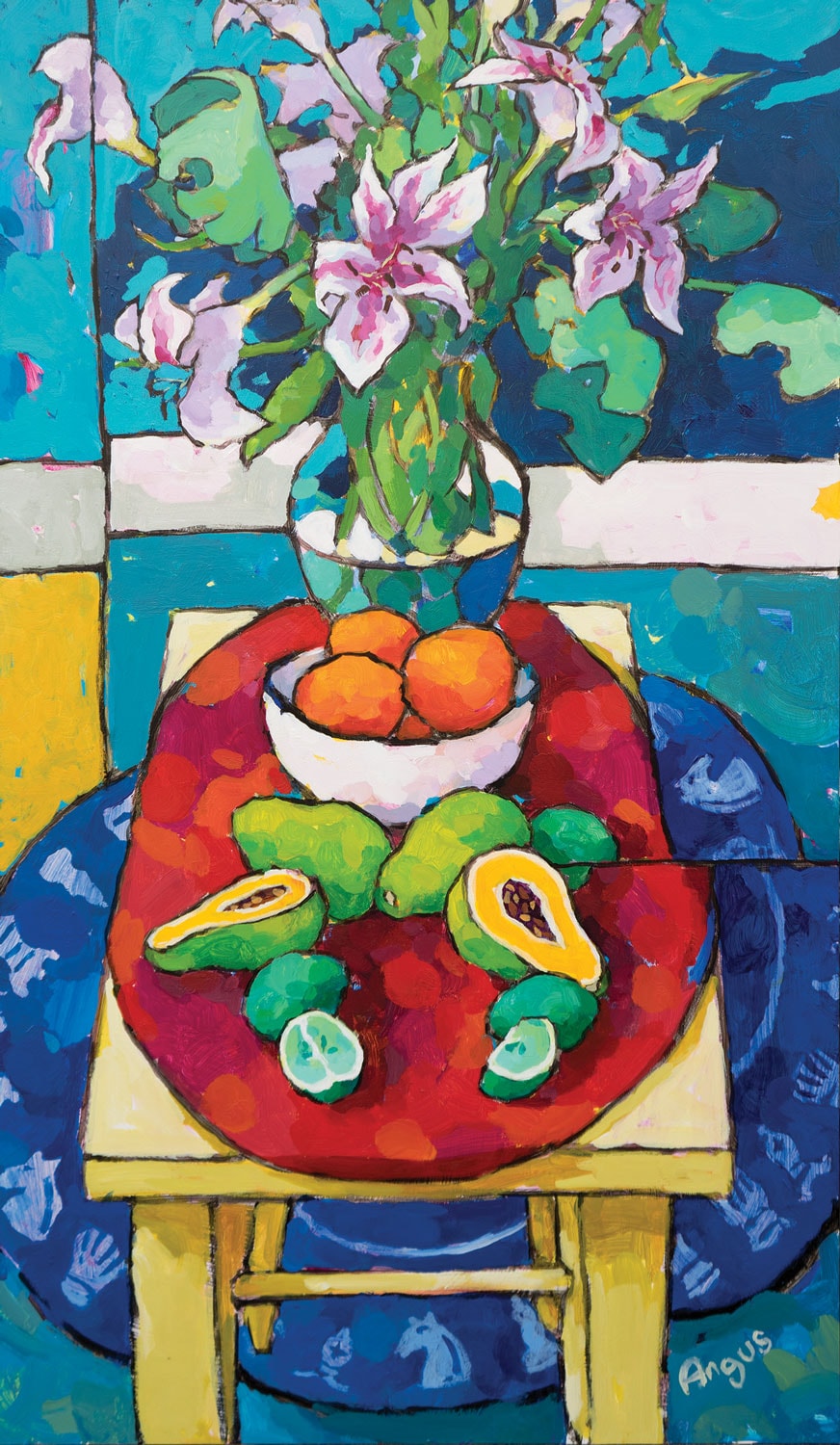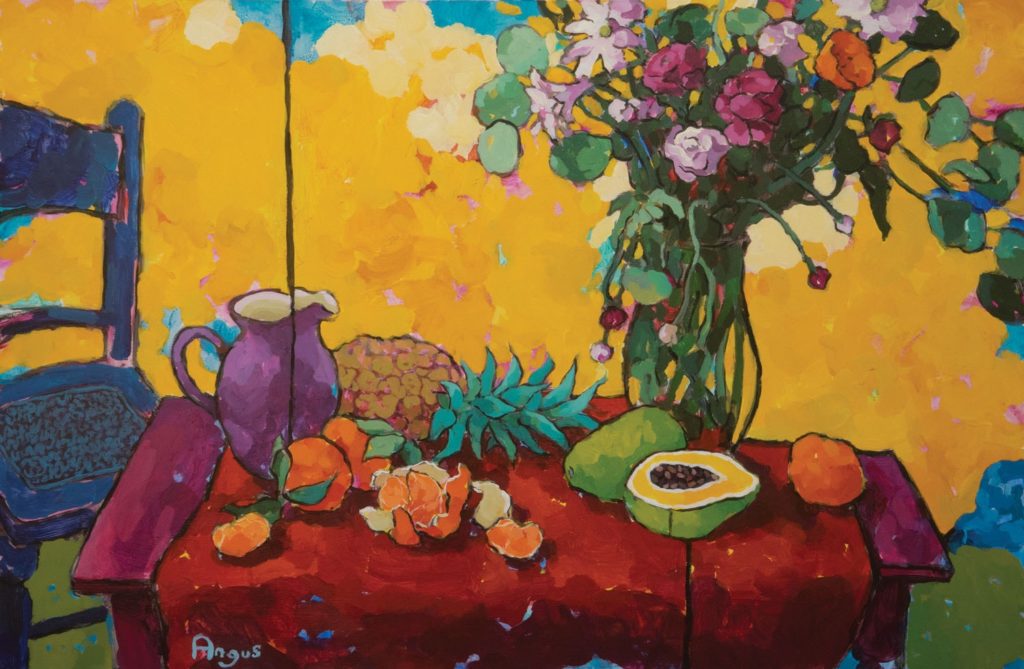
11 Jan Illuminations: Angus Wilson
Angus Wilson’s still-life paintings quicken with color, bloom with shape, and speak of the artists upon whose shoulders he stands, and the future that he sees from that viewpoint. He identifies himself as a contemporary Post-Impressionist painter, a label he’s created, but one that helps the viewer understand his work. Using the black outline technique clearly drawn from Japanese prints and progressed by Paul Cézanne and Henri Matisse, Wilson’s use of color reaches into the realm of what’s possible.
“The heart of my inspiration are those Post-Impressionists,” he says. “However, my work is noticeably more contemporary than the Post-Impressionists, but it’s not abstract.”

“A Full Table with Blue Chair” | Acrylic on Panel | 24 x 36 inches
When Wilson started painting still lifes, his palette came across as muted, but as his style evolved, he started taking risks with colors.
“With my stronger palettes over the more recent years, I’m not concerned with how bright my colors may become, but rather the way they should be in terms of the painting itself,” he says. “When I started painting full time I felt that I didn’t really have a strong style and aesthetic.” He’d been working with landscape art, and one day he happened upon a happy mistake. “I painted a still life painting and it went a bit wrong; so I painted over it with what was on my palette, and I made a sort of cubist painting. It was exciting.”
From there, his journey took a few twists and turns until he found his voice in the paring down of information.

Until the Last Leaf (Forest Hill Park, Richmond, Virginia) Acrylic on Panel | 18 x 24 inches
“What I began with wasn’t what I ended up with,” he says. “There’s a lot of soul searching in my decision to paint still lifes, and I had to reconcile myself with that idea. Now, I’m quite a passionate painter of still life. Even though they are simple everyday objects, there is a lot to say about that.”
A unique aspect of Wilson’s tableau is his use of a dissecting line. It’s surprising, and asks the viewer to take a second look at something that may at first appear familiar but upon consideration is something entirely different.
“It’s presenting something new and personal,” Wilson says. “Still life painting is taking everyday objects and appreciating them. It asks the viewer to take a closer look. When I paint these traditional elements, the kinds of arrangements of fruit and flowers, it’s very much like what the Post-Impressionists painted. The moment I place one of my dissecting lines into the piece, it elevates the work intellectually and on a visual level. It gives the viewer a challenge.”

Angus Wilson
Wilson isn’t a mimetic artist, but rather uses the objects he paints as springboards for composition, form, and color. If a lemon needs to be blue, then that’s what he paints. “These days I don’t paint many blue lemons, but the essence of the mindset is still there. When needed, I will re-imagine color to create the best painting I can, and color is one way I create drama. I’m not creating a painting that will be hung on the wall and not looked at again, but something that is powerful and impactful.”
Wilson’s show at Ventana Fine Art in Santa Fe, New Mexico, opens May 17, 2019, and runs through the end of the month. In addition to Ventana Fine Art, he’s represented by Jones & Terwilliger Galleries in Carmel and Palm Desert, California; Ann Korologos Gallery in Basalt, Colorado; and Chasen Galleries in Richmond, Virginia, and Sarasota, Florida.






No Comments